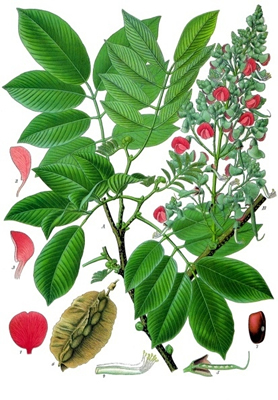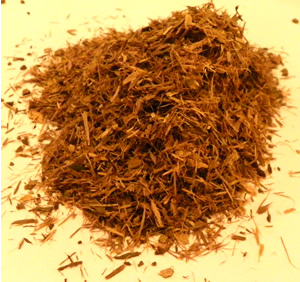Jamaican Dogwood Piscidia piscipula

Koehler's Medicinal-Plants 1887
- Common Names
- Jamaican Dogwood , Florida Fishposion Tree
- Botanical Name
- Piscidia piscipula
- Syn. P. erythrina
- Family
- FABACEAE
Medicinal Uses & Benefits of Jamaican Dogwood
![]() How to Use|
Side Effects |
Plant & Garden|
How to Use|
Side Effects |
Plant & Garden|
- Medicinal Uses: * Arthritis
* Headache/Migraine
* Nerve/Back Pain
* Pain Relief
* Sleep/Insomnia
* South_American
- Properties: * Analgesic * Anti-inflammatory * Antispasmodic * Anxiety * Nervine * Sedative
- Parts Used: bark
- Constituents: isoflavones, organic acids, beta-sitosterol, tannins
How to Use: Jamaican Dogwood
Jamaican dogwood is a fairly potent sedative well known as a specific for migraine headaches, neuralgia, and for treatment of insomnia caused by pain , nervous tension, and stress. The bark is anti-inflamatory and antispasmodic and can be used in cases of dysmenorrhea (painful periods). Jamaican dogwood is a strong analgesic that can be used along with other herbs to treat the musculoskeletal pain of arthritis and rheumatism.1,2,3
Preparation Methods & Dosage :Most often as a decoction, also taken in tincture and caps.
Jamaican Dogwood Remedies
Jamaican Dogwood Side Effects: Jamaican Dogwood is a powerful sedative. It is not poisonous to humans, but taking more than the recommended dose can cause a marked sedative effect.
Plant Description

Piscidia piscipula bark
- Plant Class: deciduous, tropical tree
- Etymology: From the Latin piscis, "fish," and caedo, "to kill."
- Flowers/Fruit/Seeds:White flowers are tinged with red or pink Flowers develop into a light brown, bean-like pod (8 to 10 cm long) with four papery wings.
- Parts used: Bark The bark is yellow or grayish brown on the outer surface, and lighter colored or white on the inner surface. Jamaica dogwood's distinctly acrid and bitter taste causes a burning sensation in the mouth, and the bark gives off an unpleasant odor.
- Leaves:Dark Green ,alternate and pinnately compound.
- Flowering Season: Ripening in July and August, the pods contain red-brown seeds with oval shapes.
- Distribution: Southern Florida, the Florida Keys, Texas, Caribbean,Native to Latin America. The Florida fishpoison tree grows in coastal zones, preferring well-drained sandy soils.The tree has some tolerance to short-term storm surges of brackish water or seawater.
Regional Traditions :Central and South America *
History and Traditions & Folklore
This tropical shrub grows wild in Central America and the northern parts of South America. The bark of the root works similarly to aspirin pain relievers by blocking an enzyme that produces inflammatory and pain causing chemicals called prostaglandins. It gained its nickname "fish poison tree" from the West Indian practice of using it to stupify fish to make them easier to catch.- Mountain Rose Herbs
- Hoffmann, David (2010-12-15). Medical Herbalism: The Science and Practice of Herbal Medicine (pp. 409). Healing Arts Press.
- Grieve, Maud Mrs. "A Modern Herbal" (1931)











